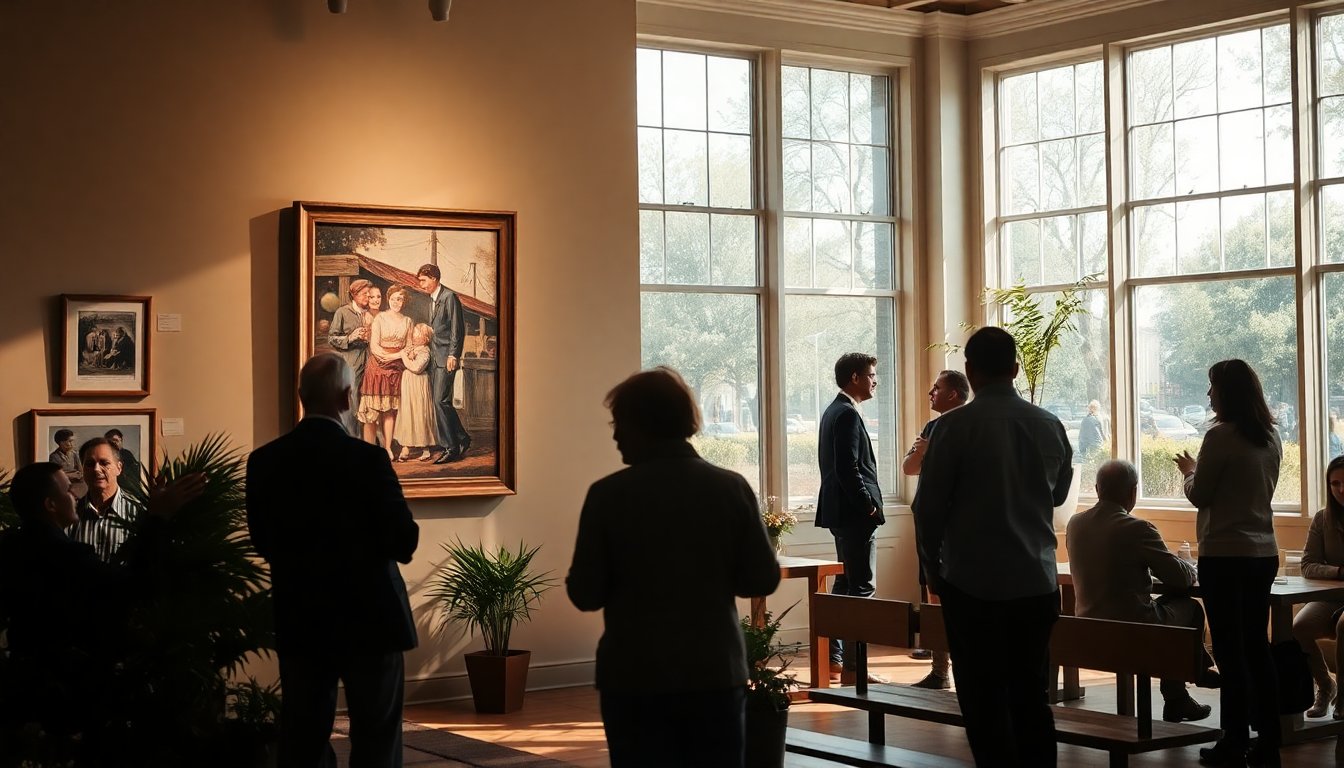Table of Contents
“`html
The intersection of art and politics often leads to significant controversies. Recent actions by the U.S. Department of Homeland Security (DHS) have ignited a heated debate about the legacy of painter Norman Rockwell. His descendants have raised serious concerns regarding the DHS’s use of Rockwell’s iconic artwork, arguing that it misrepresents the artist’s true beliefs and values.
In a series of social media posts, the DHS has appropriated Rockwell’s paintings to support a narrative aligned with anti-immigrant rhetoric. This has prompted Rockwell’s family to publicly condemn the agency’s actions, stating that such representation contradicts the spirit of inclusivity and compassion that Rockwell upheld throughout his career.
Art misused: the controversial social media campaign
The Department of Homeland Security (DHS) initiated a campaign sharing reproductions of Norman Rockwell’s artwork across various platforms, including X, Instagram, and Facebook. The first post featured Rockwell’s painting Salute the Flag (1971) with a caption stating, “Protect our American way of life.” The image, which prominently depicts white individuals in early 20th-century clothing honoring the national flag, was widely perceived as promoting a narrow and exclusionary vision of American identity.
Subsequently, the DHS shared another post showcasing Rockwell’s Working on the Statue of Liberty (1946). This post included an overlay urging citizens to “Protect your homeland and defend your culture.” The message was further emphasized by a quote from former President Calvin Coolidge, implying that those who do not align with American ideals should refrain from settling in the nation.
Such interpretations have amplified the criticism aimed at the DHS.
The artist’s true intentions
In their statement, Rockwell’s family highlighted the necessity of grasping the complete context of his work. They pointed out that throughout his expansive career, which included over 4,000 pieces, Rockwell portrayed a diverse spectrum of American life.
His paintings often illustrated scenes of everyday interactions, reflecting themes of community and humanity.
Rockwell’s family emphasized that although his earlier works predominantly featured white subjects, this should not imply that he envisioned a racially homogeneous America. The artist was profoundly influenced by the racial injustices of his era, particularly those in the Jim Crow South.
His later works, such as The Problem We All Live With (1964) and New Kids in the Neighborhood (1967), serve as powerful commentaries on civil rights and integration, underscoring his commitment to social justice.
Family’s call for unity and compassion
In a recent op-ed published in USA Today, the family of Norman Rockwell expressed concern that he would be disheartened by the use of his work to support agendas that foster division and hostility towards immigrant communities. They emphasized that his legacy should reflect compassion, inclusivity, and a celebration of diversity.
The family called on society to embrace Rockwell’s values, advocating for a message of unity rather than exclusion. They pointed to his acknowledgment of personal biases and his lifelong dedication to overcoming such prejudices, underscoring the idea that Rockwell’s art aimed to inspire connection rather than separation.
Previous instances of artistic misuse
This incident marks a continuation of criticism directed at the Department of Homeland Security (DHS) for its use of art perceived as promoting intolerance. In July, a post featuring Thomas Kinkade‘s painting Morning Pledge drew significant backlash for endorsing divisive rhetoric. Additionally, John Gast‘s 1872 work American Progress was similarly appropriated, sparking public outcry.
In light of the criticism, a spokesperson for the DHS defended the agency’s actions, expressing pride in American history and dismissing concerns as misinterpretations. Nonetheless, ongoing pushback from artists’ families and advocates for justice underscores a rising awareness and demand for responsible representation of cultural icons.
The ongoing debate underscores that Norman Rockwell’s legacy extends beyond his artwork. It encompasses the values he represented. The way his art is interpreted today will significantly influence how we understand his contributions to American culture.
“`





